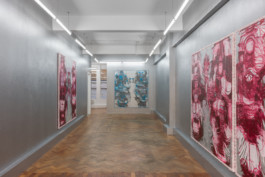
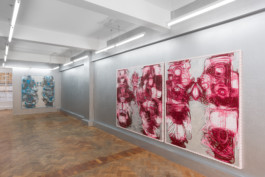
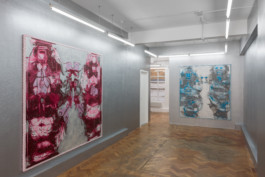
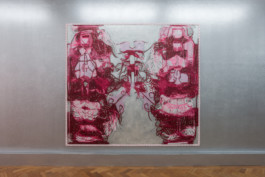


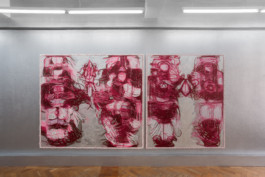

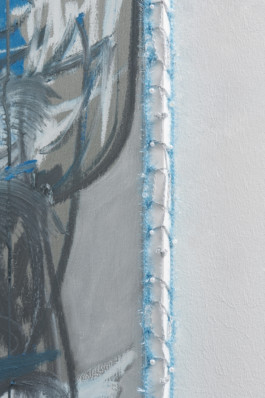
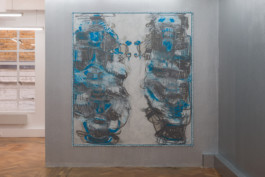
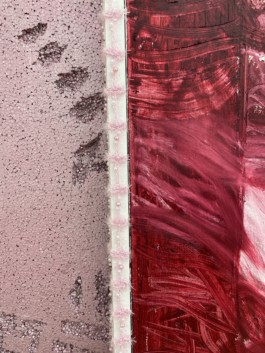
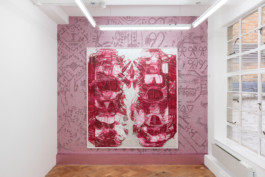

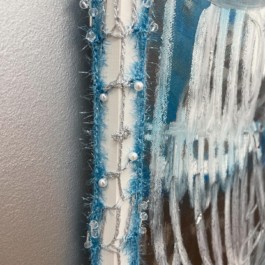
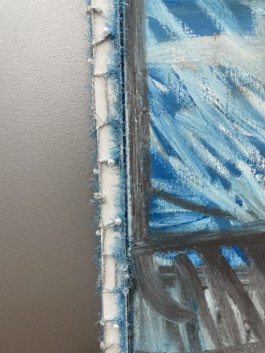
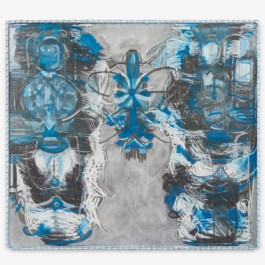
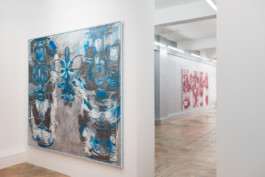
as above so below
Arcadia Missa, London
2022
For Melike Kara’s second exhibition at Arcadia Missa, a series of new works continues the artist’s exploration into combining Kurdish traditions, narratives, fates and ritual onto the canvas. In this series she further layers and abstracts tapestry motifs, echoing the sampling of weaving techniques and customs that various Kurdish tribes borrow from the range of countries their forced migration covers. The act of appropriating, adapting, and hybridising signifies the flux of the Kurdish people and their relationship to visual cultures that are interlaced with their own.
The looseness of brushstroke in these pieces moves the series on from earlier pieces that referenced individual patterns. Historically, abstraction attempts to subvert direct representation, but instead Kara points to the references key to her Kurdish-Alevi heritage, creating a composite of expression and reproduction. Here we find an explicitly subjectivised process-based abstraction.
The forms one finds in each work is personal, the viewer’s eye and experience guiding that which it perceives. Kara’s practice often interrogates how memory forms identity, and the process of abstraction in these pieces allows the viewer to bring with them their own moments of experience into understanding the composition.
The intricate frames made for these pieces have been crocheted in the method akin to the process the patterns in the paintings themselves nod to. They signal domesticity, which like much craft is a feminised labour too often overlooked. Similarly, Kara’s method of layering patterns of various colours to achieve the overall composition is akin to the process of embroidery itself: what happens beneath the surface underpins what we see. The starting point of knotting patterns, pushed into the medium of abstract painting, is key to Kara’s practice of bridging gaps between fine art and craft. Not only is the distinction often coupled with a gendered demarcation, but it is also a binary that splits perceptions of Indigenous and Western cultures. In her work she challenges these distinctions, and extends those challenges to the gallery space itself, altering the walls to become both an extension of the paintings and a site of ritual.
Olive trees and Munzur
a mixture of both
would be the perfect place
where I could trace
everything about you,
the outline is black you say
to me a light pink
do colours even matter
they tell me one step after the other
and that’s supposed to heal everything
I was five
when I saw this pain for the first time
while I sat on the stairs
and the magician waved
– Melike Kara